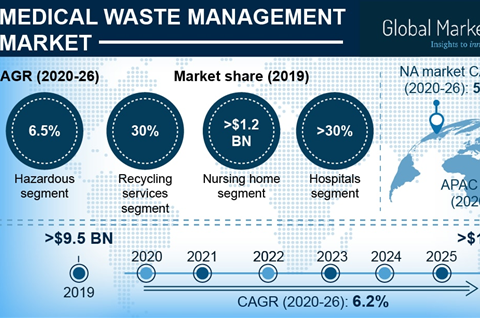According to a newly released report publicized by MarketsandMarkets, medical waste management industry cost is likely to boost from $11.3 billion in 2015 to $13.3 billion in 2020. Proper waste management may likely have a significant impact on those figures. Let alone the particular effect it would have on the natural environment.
On the other hand, many eco-friendly labs are doing their bits and taking steps in cutting down the maximum plastic waste every year. But this has already determined an amount, i.e., 5.5 million tons of plastic which is produced by global biosciences labs alone.
“The important thing to consider is ensuring appropriate waste removal, and workforce is well-trained. Equally important is management and encouragement” — Selin Hoboy, Vice-chairman of regulatory and legislative affairs at medical waste removal organization Stericycle, Inc.
Let us discuss 9 simple ways to minimize medical waste:
1. Know Your State Laws and Regulations
You have to be no stranger to state laws about medical waste, so you will know what is “regulated medical waste” (this is a waste which is polluted by blood, fluids or some other potentially contagious materials) as opposed to other types of waste materials.
2. Make A Proper Waste Management Plan
Your plan will comprise of the right way to manage specific medical waste. Discuss your plan’s goals with employees to make sure that everyone is on the same page. Study your plan at least every year for process changes or potential policy. Provide employees education and training, regularly after that and when process or policy revisions are made.
3. Whenever Possible, Use Recyclable Items Instead of Single-Use Items
For instance, a few specific medical instruments and sharp containers can easily be sanitized and recycled. Make sure if items are recyclable before buying. At the same time, review the state laws and the product manufacturer guidelines to find out if products can easily be used more often than once.
4. Place Small Medical Waste Containers in Patient’s Room
Larger storage containers help staff and patients use them as regular waste containers. Whenever possible, don’t make waste containers accessible to anyone but staff members.
5. Appropriate Separation of Waste with The Help of Color Code
For instance, you can use red waste containers for “red bag waste” and green for recycling.
6. Place Signs
Place signs in the facility that explain the particular type of waste that can easily be put into every container. Pictograms and visual reminders help your patients and staff understand the policies better and do the proper thing every time.
7. Make Sure That Chemotherapy and Pharmaceuticals Agents Are Being Dumped Properly
Instruct employees on the particular significance of not putting trace or bulk chemotherapy waste or unused pharmaceutical waste in red waste bags. Some of those items should be sorted for appropriate treatment (e.g., incineration) as per state laws.
8. Carry Out Waste Audits
Try to do regular spot inspections to find out if medical waste is being dumped correctly and that the plan or policy is being followed. Discuss your findings with employees and provide education, if required.
9. Arrange On-Site Disposal Training and Practices
This could include something from using device reprocessing (rather than dealing with particular things like disposables, they’re reassembled and cleaned for recycling) to productive control over fluid wastes. The right case in point of this is the execution of methods that empty fluid contents of suction containers straight into the sewer line, therefore reducing disposal costs and transportation costs by removing containers from the waste flow.






